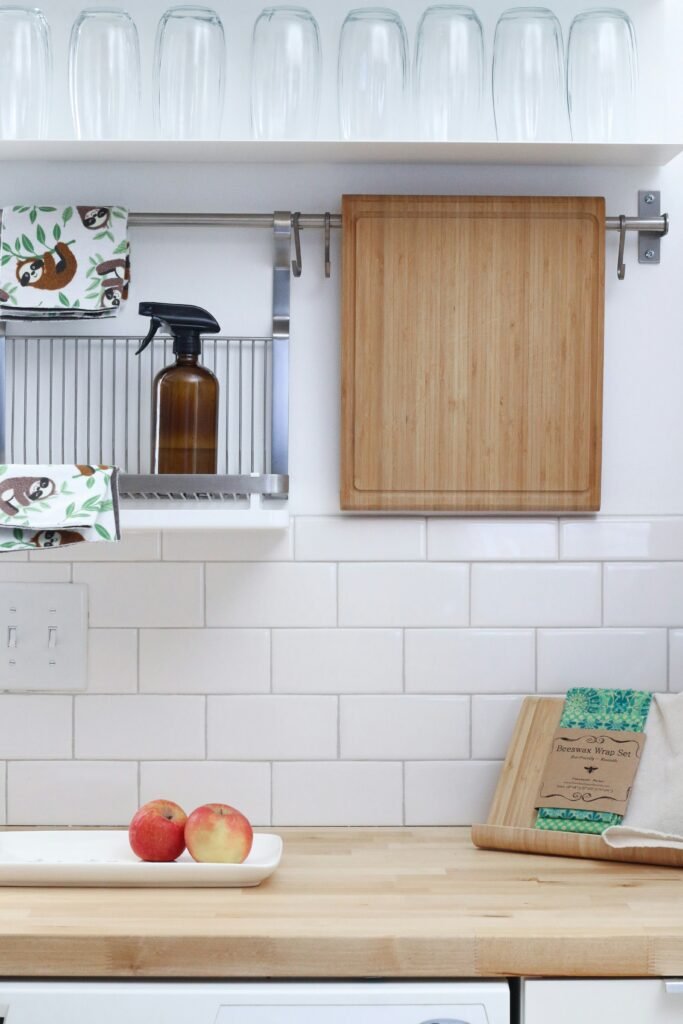You know how frustrating it can be when your plastic drawers become dirty and grimy, making it difficult to find what you need? Well, fret no more! In this article, we will share with you some friendly and effective methods to clean your plastic drawers. Whether it’s a kitchen organizer or a storage unit, these proper cleaning techniques will have your plastic drawers looking brand new in no time. So, grab your cleaning supplies and let’s get started on restoring the cleanliness and orderliness to your beloved plastic drawers!

This image is property of images.unsplash.com.
Gathering Supplies
Prepare hot soapy water
To begin cleaning your plastic drawers, the first step is to prepare some hot soapy water. Fill a bucket or sink with warm water and add a small amount of mild dish soap. The soap will help break down any dirt or grime that has accumulated on the surface of the drawers.
Gather cleaning tools
Next, gather all the necessary cleaning tools. You will need a soft sponge or cloth for scrubbing, a dry cloth for wiping, a vacuum cleaner for removing loose dirt or debris, and a toothbrush for tackling stubborn stains. Having these tools ready will ensure a smooth and efficient cleaning process.
Emptying and Disassembling
Remove contents
Before you start cleaning your plastic drawers, it is important to empty them completely. Take out any items or contents that are stored inside the drawers. This will not only make it easier to clean but also prevent any damage to your belongings.
Take out drawers
After removing the contents, gently take out the drawers from the plastic unit. Most plastic drawers are designed to be easily detachable for cleaning purposes. However, if you are unsure about how to remove the drawers, consult the manufacturer’s instructions.
Separate components
Once the drawers are removed, it is a good idea to separate the individual components, such as the drawer fronts and dividers, if applicable. This will allow you to clean every part thoroughly and ensure that no dirt or grime is left behind.

This image is property of images.unsplash.com.
Pre-cleaning
Wipe with a dry cloth
Before you begin using any cleaning solution, it is important to pre-clean the plastic drawers. Start by wiping the surface with a dry cloth to remove any loose dirt or debris. This will help prevent scratching the plastic during the cleaning process.
Use a vacuum cleaner
If you notice any visible dirt or debris stuck in the corners or crevices of the drawers, using a vacuum cleaner can be quite effective. Attach a soft brush attachment to the vacuum and gently run it over the surface of the drawers to remove any stubborn dirt particles.
Cleaning Solution
Choose an appropriate cleaner
When selecting a cleaning solution for your plastic drawers, it is important to choose one that is suitable for the material. Look for mild, non-abrasive cleaners that are specifically formulated for plastic surfaces. Avoid using strong chemicals or abrasive cleaners, as they can cause damage to the plastic.
Avoid using harsh chemicals
It is crucial to avoid using harsh chemicals on your plastic drawers as they can ruin the finish and cause discoloration. Chemicals such as bleach or ammonia can be particularly damaging. Opt for mild, gentle cleaners that are safe for plastics to preserve the integrity and appearance of your drawers.
Test on a small area
Before applying the cleaning solution to the entire surface of the drawers, it is recommended to test it on a small, inconspicuous area. This will help ensure that the cleaner does not cause any adverse reactions or damage the plastic. If you notice any negative effects, avoid using that particular cleaner and try a different one.

This image is property of images.unsplash.com.
Cleaning Process
Apply the cleaning solution
Once you have determined the appropriate cleaning solution, it’s time to apply it to the plastic drawers. Dip a soft sponge or cloth into the cleaning solution and gently rub it onto the surface. Make sure to cover the entire area evenly, paying special attention to any stains or grime buildup.
Scrub gently
Using a soft sponge or cloth, gently scrub the surface of the drawers in a circular motion. Be careful not to apply too much pressure, as this can cause scratches or damage the plastic. Take your time and work systematically, ensuring that every nook and cranny of the drawers is thoroughly cleaned.
Removing Stains
Apply baking soda paste
For tougher stains or stubborn residue, a baking soda paste can be highly effective. Mix baking soda with a small amount of water to create a thick paste. Apply the paste directly onto the stains or affected areas and let it sit for a few minutes. Baking soda has natural stain-removing properties and will help break down the tough stains.
Use a toothbrush for scrubbing
After allowing the baking soda paste to sit, use a toothbrush to gently scrub the stained areas. The bristles of the toothbrush will help loosen the stains without causing any damage to the plastic surface. Continue scrubbing until the stains are visibly reduced or removed.
Rinse thoroughly
Once you have successfully removed the stains, rinse the plastic drawers thoroughly with warm water. This will ensure that all the cleaning solution and baking soda residue is thoroughly removed. Rinse multiple times if needed to ensure the drawers are clean and free from any residue.
Drying
Allow air drying
After rinsing the plastic drawers, it is important to allow them to air dry completely. Place them in a well-ventilated area or outdoors, if possible. Allowing the drawers to air dry will ensure that no water spots or streaks are left behind, resulting in clean and pristine-looking drawers.
Use a clean towel
If you need the plastic drawers to dry faster or want to ensure they are completely dry, you can also use a clean towel to gently pat them dry. Avoid using a towel with rough or abrasive textures, as this can damage the plastic. Instead, use a soft and absorbent cloth to gently remove any excess moisture.
Ensure no moisture remains
Before reassembling the drawers, make sure that there is no moisture remaining on the surface or inside the drawer. Any leftover moisture can lead to molding or unpleasant odors over time. Take the time to thoroughly inspect each component and ensure they are completely dry.
Reassembling
Dry all components
Now that your plastic drawers are clean and dry, you can begin reassembling them. Before doing so, ensure that all the individual components, such as the drawer fronts and dividers, are also dry. This will prevent any moisture from getting trapped inside the drawers.
Put drawers back in place
Carefully slide the drawers back into their designated spots in the plastic unit. Take your time to ensure that they fit properly and glide smoothly. If you encounter any resistance or difficulty, double-check that the components are aligned correctly and adjust as necessary.
Arrange contents
Finally, once the plastic drawers are reassembled, you can start arranging your contents back into the drawers. Take the opportunity to declutter and organize your items. This will not only keep your drawers tidy but also make it easier to clean them in the future.
Maintenance Tips
Regularly empty and clean
To ensure that your plastic drawers remain clean and in good condition, it is essential to establish a regular cleaning routine. Empty the drawers on a monthly basis and give them a quick wipe down to remove any dirt or debris. This will prevent buildup and maximize the lifespan of your plastic drawers.
Avoid overloading drawers
While plastic drawers are designed to be sturdy, it is important to avoid overloading them. Excessive weight can cause the plastic to warp or crack. Make sure to distribute the weight evenly among the drawers and avoid placing items that are too heavy or bulky.
Keep in a dry environment
To prevent moisture-related issues such as mold or mildew, it is crucial to keep your plastic drawers in a dry environment. Avoid placing them in areas with high humidity or prone to water leaks. If necessary, use a dehumidifier or moisture-absorbing products to maintain a dry atmosphere around your drawers.
Alternative Cleaning Methods
Vinegar and water solution
If you prefer using natural cleaning solutions, a mixture of vinegar and water can be an alternative to commercial cleaners. Mix equal parts white vinegar and water in a spray bottle and spray it onto the plastic surface. Let it sit for a few minutes, then wipe clean with a soft cloth. Vinegar has natural antibacterial properties and can effectively remove dirt and grime.
Bleach and water solution
For disinfecting plastic drawers, a diluted bleach solution can be used. Mix one part bleach with three parts water and apply it to the surface of the drawers. Let it sit for a few minutes before wiping clean with a cloth. Be cautious when working with bleach, as it can cause discoloration or damage if not used properly.
Hydrogen peroxide solution
Hydrogen peroxide is another alternative cleaner for plastic drawers. Mix equal parts hydrogen peroxide and water in a spray bottle and spray it onto the surface. Let it sit for a few minutes, then wipe clean with a cloth. Hydrogen peroxide is an effective disinfectant and can help remove stains and odors from plastic surfaces.
By following these proper cleaning techniques for plastic drawers, you can ensure that they remain clean, functional, and looking their best. Regular maintenance and proper care will help extend the lifespan of your plastic drawers and keep your belongings organized and protected.
